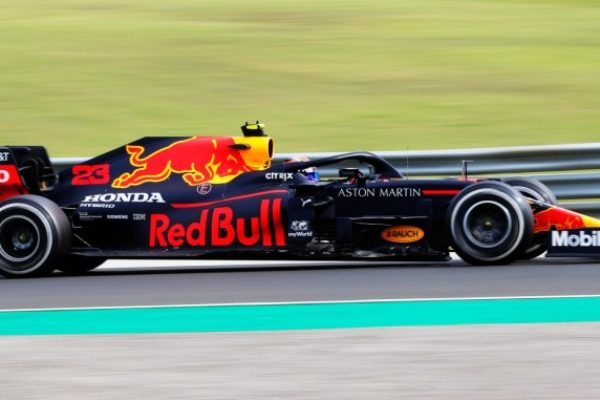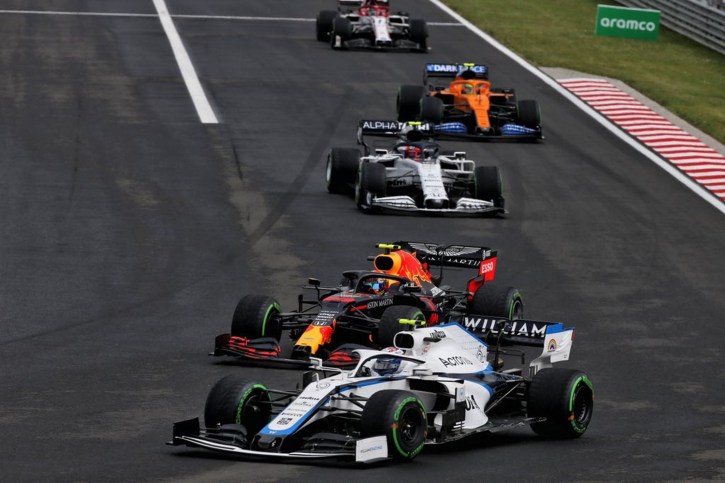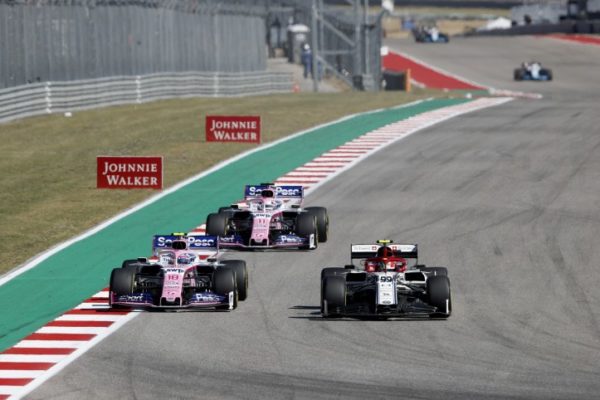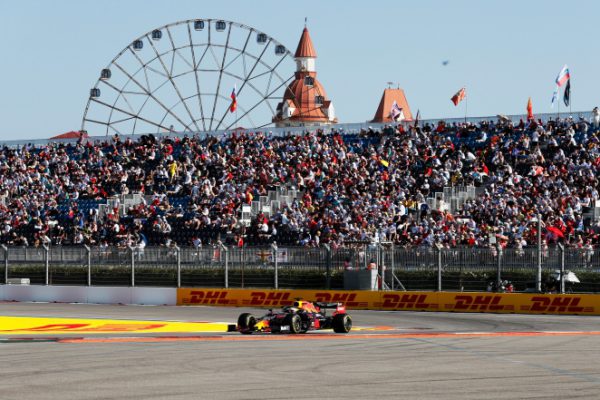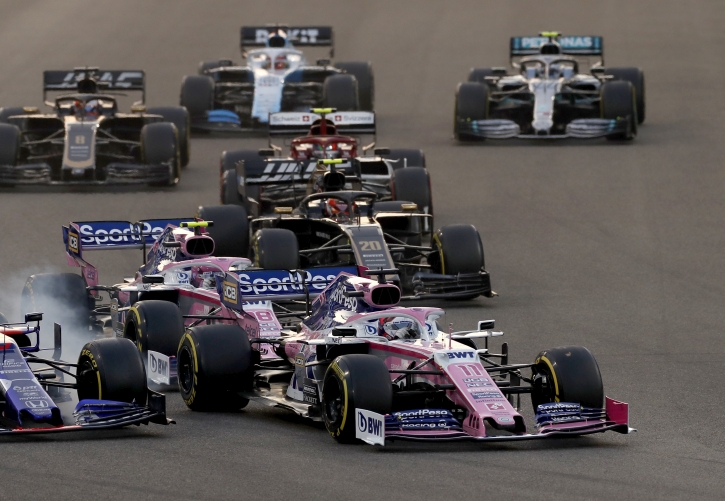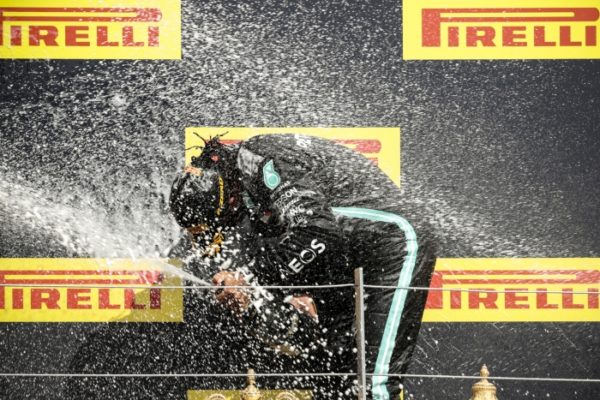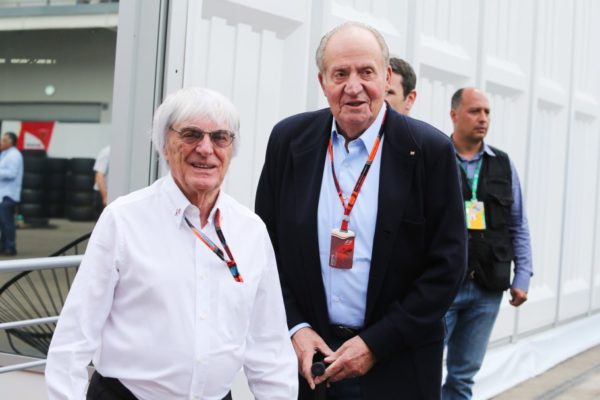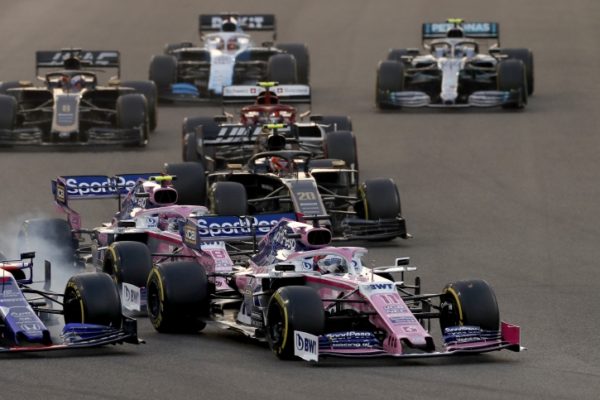When the Red Bull energy drink manufacturer bought the flailing Jaguar team many F1 pundits had no idea what to make of it. No-one could guess whether they were a serious outfit or just in it for the publicity – Red Bull is, after all, essentially a marketing company. Come their first race, however, they surprised the entire field with the help of a stunning drive from a resurgent David Coulthard – finishing fourth. As the season progressed they commanded more and more respect with performances not seen from the team since they were called Stewart-Ford*. Clearly they were serious about racing – Dietrich Mateschitz knows full well that the further up the grid you are, the more your team name is mentioned.
Red Bull made even more clear how serious they really were by making two sensational announcements during the course of 2005: First that they had bought the Minardi Formula 1 team to run as a second team and then the absolute clincher: They had signed ace designer Adrian Newey as of the ’06 season. Not even McLaren could match the salary offer made by Red Bull Racing and there had been talk that Newey wanted a change for some time – including a very nearly signed deal with Jaguar Racing a few years before. So the deal is done and as of 10 January Adrian Newey will be in the employ of the Red Bull Racing Team. What now?
Reason or folly?
Many is the paddock talker that would discount the role of the star designer in the modern F1 team. There is no more freedom for radical ideas like the six wheel Tyrrel or the Brabham Fan Car – the parameters within which cars are designed are narrow and the teams that work on them huge. Does one man really make that big a difference? Christian Horner, Team Principle of Red Bull Racing, certainly thinks so – stating that if he could choose between Newey and Michael Schumacher he would choose Newey any day. In fact he believes it so strongly that he convinced Dietrich Mateschitz to write a US$10 million cheque made out to one Adrian Newey every year.
History, stats, facts and circumstances you see, all point straight towards him. From 1992 to 2004 the cars of two designers won every single Formula 1 drivers and constructors world championship – the Brit Adrian Newey and the South African Rory Byrne. In 2005 a number of factors ended this trend: At Ferrari Byrne stepped away from the design coalface and Bridgestone failed to supply tyres quite as good as Michelin’s. McLaren is a different story – the McLaren is believed to have been the fastest car on the grid in 2005 but a wildly unreliable engine supply most certainly cost the team both world titles.
This makes Newey and Byrne both contenders correct? In theory yes, but Byrne has already announced his retirement from the sport after the 2006 season and is, as stated above, no longer actively involved in the design of the car. Sure, he also said back in 1995 that he’s retiring but one feels that, 10 years down the line and now for the second time, he’s probably serious.
This makes an otherwise impossible choice between the two quite easy. There is further evidence that point to the necessity of a good designer. Another South African, Gordon Murray, and another Brit, Colin Chapman, are both shining examples. Colin Chapman was of course the genius behind too many winning Lotus cars to list here – and not only in F1 either. Gordon Murray was the man behind two championship-winning Brabhams and the all-dominant McLarens of the late eighties, most notably the 1988 car which was the most dominant Formula 1 car in the history of the sport – raking in 199 points and winning 15 out of 16 races, only missing out on the remaining race because neither of the two McLaren drivers, Senna and Prost, finished that one particular race. Gordon Murray went on to design the McLaren F1 road car – still believed to be the finest supercar ever produced even in the face of the recently released Ferrari Enzo and Bugatti Veyron.
The past
Studies-wise, Newey came from an aeronautics background but his working career started with March where he designed one fairly successful GP2 car, one very successful GTP sportscar (which won two consecutive IMSA titles) and Indy cars for three years, his designs taking the Indy titles in’85 and ’86. His F1 debut came in ’86 when he was requested to help improve the FORCE car. The car improved but the team faltered and in ’87 Newey briefly went to the CART series to Race Engineer for Mario Andretti. March then rehired him to design their 881 Formula 1 car. The car showed promise but the following ’89 car was no great success. The 1990 car was considered a complete flop and Leyton House, who had taken over the team, fired Adrian Newey.
Talk about misguided – his co-designer, Gustav Brunner, would later be the man who miraculously designed Minardis that could still make the 107% qualifying rule despite the budget and was head-hunted by Toyota. This met without success and Brunner, now in his 50’s, quietly left Toyota late in 2005.
Newey, on the other hand, was quickly offered a job by none other than forward-thinking Patrick Head from Williams. Newey’s March/Leyton House work did not go to waste as he set about designing a car to the same theme for Williams. The rest is, as they say, history. Williams won a series of drivers and constructors titles between 1992 and 1997, the exceptions being ’94 when Schumacher won the driver’s title following the death of Ayrton Senna and ’95 when the German and Benetton won both titles. Their joy, however, was short-lived as Newey cars returned to their winning ways with first Damon Hill and then Jacques Villeneuve taking the drivers titles in ’96 and ’97 and his Williams designs taking the constructors titles. Newey indicated that he was interested in leaving the Williams squad in ’96 and by late 1997 he joined McLaren. Williams, once statistically the most successful team ever to grace the pinnacle of motor sport, has not won a championship since.
“Losing someone as good as Adrian is only half the story. The other half is that in future he will be working against you”, was Frank Williams’ comment on Newey’s departure. Very well did he know then, what he was losing.
Newey’s arrival at McLaren was early enough for his influence to show in their 1998 car and this resulted in a double world championship for the team in the first Newey-influenced McLaren. 1999 saw Mika Hakkinen take the drivers title for McLaren once more but the Byrne era had begun and Ferrari, who had lured the South African out of retirement in 1996, saw their efforts pay off as they took the first of six consecutive constructors titles in Rory Byrne designed cars. Five consecutive drivers titles were won in parallel but Newey’s cars were never far behind.
The future?
So what will happen at Red Bull now? Will they win the 2006 World Championship? Will they win a few races? After all, gazing at the past would seem to indicate that Red Bull Racing should be almost instant winners now. The answer is a resounding “no”, however. And this is not because some claim that Newey has lost interest – the 2005 car soundly puts paid to that theory. Firstly, Newey only joined the team officially on Monday 9 January – a day before the car was tested for the first time. The car in testing is not a Newey design. Not even the Red Bull car that runs the very last race of this season will be a Newey car. No, firstly this season will be spent in the pursuit of structuring the team around him, finding out where their strengths lie, what is missing, who else needs to be recruited, etc. You see the modern chief designer, or in fact technical director, is not a lone cowboy who does everything himself like in the days of the venerable Colin Chapman and his radical Lotus designs that were dreamt up almost overnight. The modern Chief Designer is a man who needs the ability to meld a team around him. He is a leader that inspires a team and galvanises them into a well-honed unit that produces extreme results. Anything less will just not do at a level of competition where a tenth of a second per lap could decide a World Championship.
Secondly, common sense dictates that Newey spends the majority of his design time on the ’07 car, not this year’s machine. He can make a much bigger impact on next year’s car than the ’06 machine. Team statements made since 9 January confirm this.
This year’s car, of course, will inevitably receive some of the man’s attention and will, no doubt, improve as the year progresses. Expect to see Red Bull move up the grid with the passing of the season but most likely not to a point where it will win a race against the current F1 Super Powers – especially if Michelin fails to match Bridgestone’s performance under the revised (yet again) tyre rules like they did in 2004 when these very same rules were last in place.
But will they at least take a podium or two? Expect it. Especially later in the year as the Newey influence begins to show – which it will. Expect even Red Bull “B Team” Scuderia Torro Rosso to show better pace – if not from direct Newey involvement then at the very least from the learnings of the technical staff being passed down the line – which I am sure will happen under the guidance of the able Christian Horner and the driven Dietrich Mateschitz.
And what of McLaren? Let us again refer to the past and say that Williams won their last Formula 1 Drivers and Constructors World Championships with a Newey designed car. Eight years ago. Benetton won their last championship in a Byrne-designed car and had to wait ten years, during which the team underwent the transformation to the well-managed Renault team, for another. Incidentally, the team is again under the leadership of the enigmatic Flavio Briattore – the same team principle who guided Benetton to double world championships in 1995.
McLaren, of course, has recovered from the departure of key technical personnel before. It is an impeccably managed team and team boss Ron Dennis will not let Newey’s departure rock his team too much – if he can help it. McLaren has an army of technical personnel who has worked under Newey, who has learned from him, developed under his guidance and who will, no doubt, turn out a brilliant car. That said, in a sport where a tenth of a second could win or lose a championship, The Newey Factor could make all the difference.
* In 2000, their last year as Stewart Ford, Sir Jackie Stewart’s privately owned team finished fourth in the constructor’s world championship with Rubens Barrichello and the talented but chronically unlucky Johnny Herbert as drivers. They scored 36 points that year. The Ford Motor Company bought Stewart Ford in 2000 and fielded the team as Jaguar Racing from 2001. Many speculated that the cash injection brought by the new Ford ownership to such an inherently strong team should prove a worrying factor to the dominant teams but the 2001 season saw Jaguar score only 9 championship points. Obviously the departure of Jackie Stewart – the team’s strong former leader who was now only involved in a consulting role, had a massive effect on the team and they were never to recover. 2002 saw them score 8 points, 2003 18 points and 2004 10 points. In 2004 Red Bull purchased an essentially bankrupt team and renamed it Red Bull Racing for the 2005 season. The team set out to race with a development of the non-performing 2004 car and, against all the odds, scored 34 points.
Edu de Jager
DailyF1News.com
For all the columns by this author, click here
